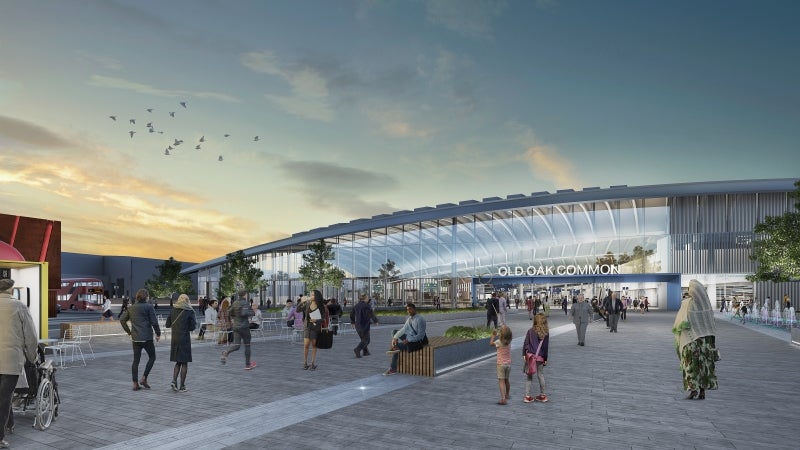

On 5 February, HS2 Ltd revealed design images for the new Old Oak Common high-speed rail station, which is set to become a London ‘super-hub’ when the UK’s High-Speed 2 (HS2) railway service opens in 2026.

Discover B2B Marketing That Performs
Combine business intelligence and editorial excellence to reach engaged professionals across 36 leading media platforms.
Nestled in north-west London, half a kilometre south of Willesden Junction station, the Old Oak Common site – currently a rail depot for Great Western Railway and Heathrow Express trains – will host the largest sub-surface station to be built in the UK, with a length of 1km and a depth of 20m below ground level.
The station will incorporate six underground platforms for high-speed HS2 services, which in the project’s first phase will be able to carry passengers to London Euston in nine minutes and to Birmingham Curzon Street in 38 minutes, as well as an interchange with new Elizabeth Line (Crossrail) services.

As well as the green space pictured in the aerial image above, which HS2 Ltd says could feature broad-leafed trees, water features and outdoor event spaces, the design by WSP and architecture firm WilkinsonEyre envisions an open entrance plaza that is highly pedestrianised but also allows for easy bus access.

US Tariffs are shifting - will you react or anticipate?
Don’t let policy changes catch you off guard. Stay proactive with real-time data and expert analysis.
By GlobalDataThe station is intended to become a nexus in a wider regeneration scheme for the area, developing a new neighbourhood in the former industrial district with more than 25,000 new homes and supporting up to 65,000 jobs. The broader project is being led by the Mayor of London’s Old Oak and Park Royal Development Corporation (OPDC).
“In line with Mayoral policy we will be using the opportunity offered by the HS2 station, which we are now beginning to see take real shape, to create a vibrant new quarter of London that will bring jobs, housing and a whole new social infrastructure,” said OPDC chairman Liz Peace.

Old Oak Common’s main concourse will link the two halves of the station, with a roof form inspired by “our Victorian railway heritage”, according to WSP’s project director for Old Oak Common Adrian Tooth.
Upon completion, the station is expected to become the UK’s best-connected rail interchange, serving around 250,000 passengers daily.
“Linking HS2 and Crossrail, our new station will be a landmark piece of architecture at the heart of the [OPDC] development, designed around the passenger to ensure seamless, accessible and stress-free travel,” said HS2 Old Oak Common project director Matthew Botelle.

The six HS2 platforms will be located underground, accessible by escalator from the station’s main concourse. At surface level, four platforms will be dedicated to Elizabeth Line services, and another four have been earmarked to potentially provide additional rail connections to Wales and the west of England.
“Our design responds to the station’s function, recognising that more than half of those using the station will interchange between the below-ground HS2 and the Elizabeth Line,” said Tooth.

Construction at the site is scheduled to start later in 2019. As of now, HS2 is working to clear the site and prepare it for building works to begin, as pictured here. Current works include site clearance, demolition and dismantling of existing buildings, archaeological works and surveys.
The Old Oak Common site will also play an important role in the wider HS2 scheme as the project ramps up, as excavated material from HS2’s tunnelled sections will be brought to the surface here for disposal by rail.
“These designs show how Old Oak Common will set world-class standards for the future of stations,” said the UK government’s HS2 Minister Nusrat Ghani. “The task for our designers and engineers now is to take these ideas from the drawing board to reality, building an iconic station that is accessible, safe and open to all.”





